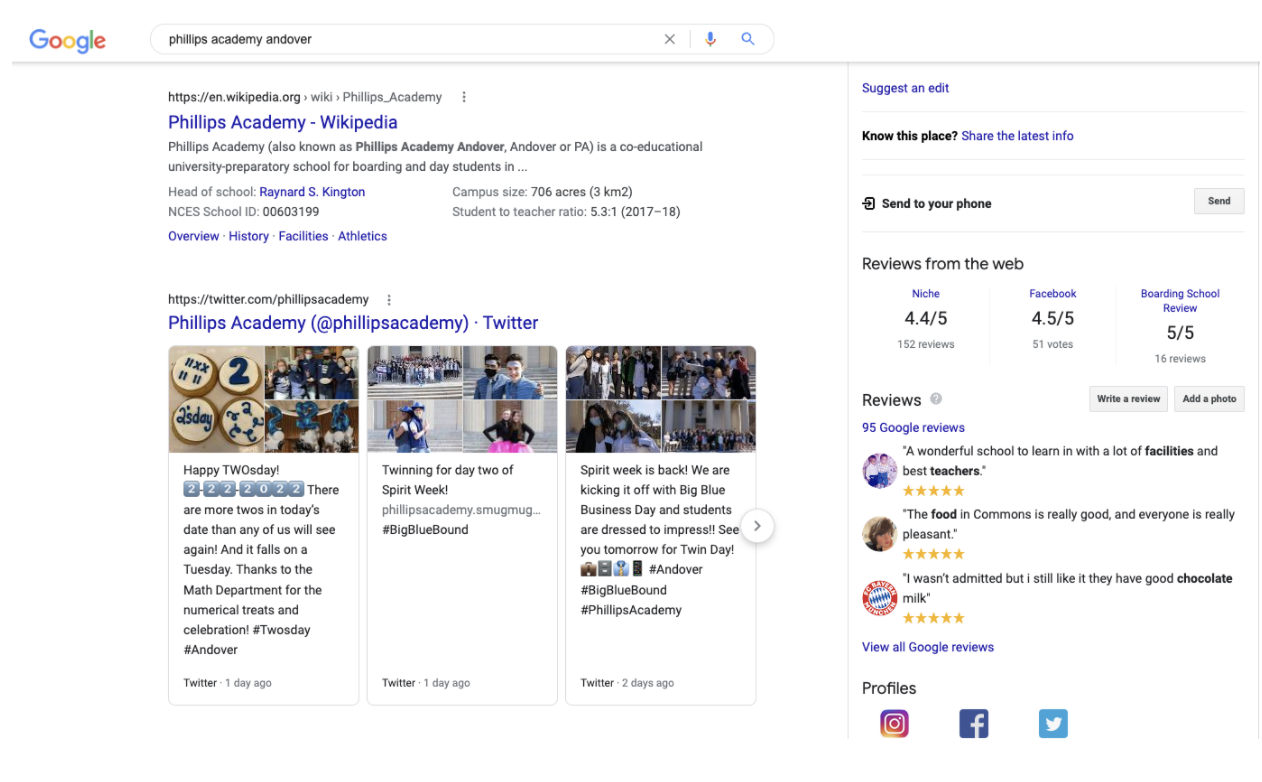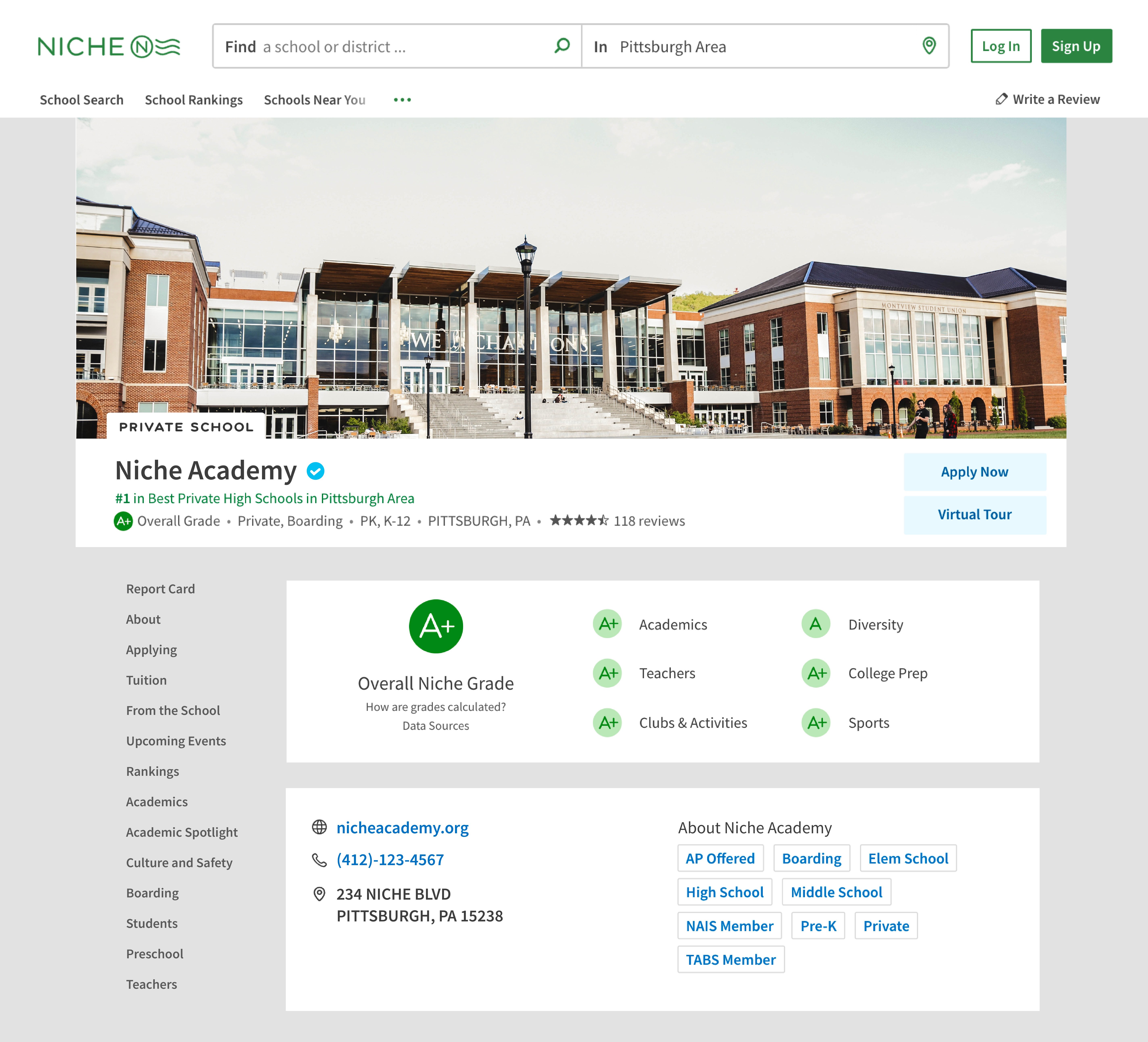Angela Brown joined Niche in 2021. Before joining Niche, she was director of marketing and communications at Flint Hill School in Virginia. In her role at Niche, Angela creates content, research, and insights to help PK-12 marketing, communications, and admissions professionals refine their strategies, hone their craft, and elevate their roles in schools. In addition to creating content for Enrollment Insights, Angela is a regular presenter, writer, and podcast guest. She is a member of the National School Public Relations Association, American Marketing Association, and The Association of Independent School Admission Professionals (AISAP), and serves on the Advisory Board for the Marcom Society, an exclusive online community for independent school marketing and communication professionals. Since November 2020, she has served as a judge for the Brilliance Awards, which honors marketing and communications work from PK-12 private schools around the world.
Editor's note: We got in touch with Angela Brown from Niche - one of the largest review sites in the US. While primarily written for a US audience, the article also offers valuable insight for how to best set up your profile if you feature on any international review sites.
If you’ve shopped for just about anything recently, online reviews were probably part of your decision-making process. In 2021, 77% of consumers “always” or “regularly” read online reviews while they were browsing for local businesses—a 17% increase from 2020. Reviews can influence purchase decisions for everything from a hotel room to a bar of soap, and school choice is no different. In fact, the stakes are a lot higher. And when prospective families search for school options in that oval-shaped box on Google, you can be sure that reviews will be among the first things they look at–but what will they find for your school? Here are some things to know about online reviews for schools in 2022.
Prospective families will see reviews before they see your website
Unless a prospective parent searches specifically for your school’s name (which is likely to happen a little further down the funnel, especially for families who are relocating or new to private schools), there’s a very high chance they’ll encounter online reviews before they see a link to your website.
Why? Because the kinds of generic searches that parents do early in the school search process (e.g., “private schools near me” or “best private schools in Sydney”) are most likely to show online reviews with a sprinkling of paid ads before they see links to websites for specific schools. So while that beautiful website you’ve invested in is critically important, it could take quite a bit of scrolling for a family to see a link to it after performing a generic, early-stage search.
Online reviews can also make or break a parent’s decision to add your school to their “shopping” list. When that search result loads, rankings from Google will appear at the top of the page, and because Google defaults to showing schools with a 4-star rating or higher, if your school doesn’t have a strong track record in this area, you might not make the cut for the next step.

Once you’ve made it onto a parent’s short list for schools, rankings and reviews still have a role to play. While Google will display more information that’s specific to your school (e.g., your website, Wikipedia page, and social content), the knowledge panel that appears on the right side of the screen will display a summary of your school’s reviews from popular sites, followed by reviews from Google users.

The key takeaway here’s that school rankings and reviews are extremely visible in the school search process, and parents use them. In the Niche 2021 PK-12 Parent Survey, 57% of elementary school parents, 46% of middle school parents, and 46% of high school parents reported that school rankings were important factors in their school selection process.
Not all review sites are created equal
Now that we’ve established their importance, you might be wondering which review sites are the most relevant for prospective families. The sites that Google defaults to in your knowledge panel are all great places to start because those are the platforms that will be the most visible in search results when parents are in the early stages of the school search process.
What’s the user experience like?
These websites are an extension of your school’s reputation and brand. As you think about which platforms to invest in, think about the experiences that prospective families will have on each site. Is the design clean and intuitive or are pages cluttered with ads and pop-ups? Is detailed information about specific schools easy to find?
Can schools share authentic information about their communities with social and multimedia content or are profiles mainly comprised of data and text? That last one’s especially important. Parents definitely appreciate nuts and bolts information like test scores and student-teacher ratios, but they also want a window into what your community is actually like, and you can’t get that from a bar chart. Some platforms offer those kinds of options, but many don’t.

What does it offer you beyond rankings or reviews?
In addition to the ability to control your school’s profile on a review site, you’ll also want to consider what else is possible with one of these platforms. For the most part, the action stops with the rankings and reviews (and more charts), but some platforms offer a more robust ecosystem of digital marketing services that can help you maximise your school’s profile, expand your reach with prospective families, drive more traffic to your school’s website, and take some of the burden off of your internal team. These services aren’t free, but they can be a good use of any budget that you have allocated for digital marketing or, potentially, funds that you may want to reallocate from a less measurable tactic like print advertising.
A current profile is a happy profile
Once you’ve decided which platforms to focus on, it’s important to keep your school’s profile or page up-to-date to the extent that you can. Just like your school’s website, your profiles on commonly-used review platforms need to be maintained with current information about your programs, contact information, photography and video (when possible), etc. Coming across outdated information or broken links during the school search process is a frustrating experience for prospective families and a poor reflection on your school, so don’t let it happen to you! The key to keeping your profiles current is to have a plan. Here’s what that might look like:
Plan an annual review every summer
Taking time every summer to do some “digital housekeeping” is a must for school marketers and admissions professionals, and reviewing and updating your school’s profile on review sites for the upcoming year should be part of that list. Summer’s a great time to refresh your content and to begin to update the schedule for your fall admission events. From there, block time on your calendar for checking those profiles on a monthly basis to make sure you’re keeping your content fresh.
Lean into your data
While some profile updates will reflect the timeline of your admissions cycle, some can be data-driven. The reports can provide valuable insights, like how schools measure up to their peers, how much traffic their profiles are receiving, and links that users are clicking on.
They can also be easily shared with members of your team or other school leaders. Data provided by review platform partners can be part of the broader ecosystem of data that you use to make marketing decisions for your school.
Mobilise your biggest fans
Of course, up-to-date reviews are a critical part of a healthy online profile. With all of the upheaval families have experienced in education during the past couple of years, it’s unlikely they’ll put much stock in reviews from 2019 or earlier—that was a lifetime ago! Your prospective families want to know what’s happening at your school today and no one can tell that story better than current members of your community.
As you complete your digital housekeeping tasks, make sure you have a strategy for reaching out to your current parents, students, and alumni to submit reviews that speak to the experiences they’ve had with your school. Volunteers from each of these constituencies, like members of your parents’ association, student ambassadors, and alumni council members, are great people to start with—they tend to have a high level of satisfaction and are actively engaged in the life of your school.
You can set them up for success by providing direction for which specific sites to leave reviews on so they know where to start, and encouraging them to be honest and speak from their genuine experiences; resist the urge to provide a script or to read their reviews ahead of time.
Finally, you’ll want to mix things up with the timing. You don’t want to flood review sites with this content all at once. The fall can be a good time to engage students and families and you can save alumni for the spring.
Online reviews are as important as ever, and their importance will only increase as a new generation of parents begins to dominate your enrolment funnel. When they begin the search process for the pivotal decision of where to send their children to school, you want to be sure that your school is well-represented across the platforms they’ll see first.
Once families see how strong your reviews are, their next step is to check out your website. If it’s well designed, like a Digistorm Website, it will serve the dual purpose of providing families with important admissions information and telling your school’s story with branded text and images. With a strong website and current, authentic reviews, you’ll be well on your way to achieving your enrollment goals.
.png)